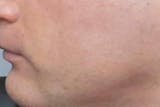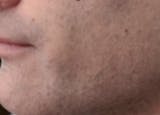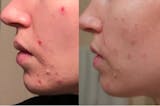Topical steroids are a common treatment for eczema, but can lead to a condition known as topical steroid withdrawal (TSW) or steroid addiction.
Preventing TSW involves understanding the proper use of topical steroids, avoiding self-treatment with over-the-counter topical steroids, and regular check-ups with healthcare providers.
Eczema is a chronic skin condition characterized by periodic acute flares, marked by red, itchy, and inflamed skin. The severity and duration of an acute eczema flare are influenced by three main factors:
Immune system sensitivity
Trigger intensity
Skin barrier strength
A common first-line treatment for an acute eczema flare is the use of topical steroids. One potential complication associated with the use of topical steroids for eczema is a phenomenon known as topical steroid withdrawal (TSW), also referred to as steroid addiction.
For individuals dealing with eczema, understanding the risk of TSW and how to identify its symptoms is crucial. Mismanagement of TSW can exacerbate eczema symptoms and complicate the treatment process, potentially damaging the patient-doctor relationship and causing unnecessary distress.
JUMP TO SECTION:
Understanding Topical Steroid Withdrawal (TSW)
Topical steroid withdrawal (TSW) is a condition that occurs when the skin reacts adversely to the discontinuation or reduction of topical corticosteroids (topical steroids). TSW has been divided into two subtypes with distinct clinical presentations: erythematous edematous and papulopustular.
The symptoms of TSW can vary depending on the subtype, but may include:
Erythema (redness)
Swelling (edema)
Burning or stinging sensation
Itching
Papules or pustules
Skin dryness or desquamation (peeling)
Oozing or crusting
How to distinguish TSW from eczema flare-ups
TSW shares symptoms with several other dermatological conditions, making it essential to consider alternative diagnoses, such as:
Atopic dermatitis (eczema)
Contact dermatitis
Rosacea
Seborrheic dermatitis
Diagnosing TSW can be challenging, as its symptoms often overlap with those of the underlying dermatological condition, such as eczema. A thorough patient history and clinical examination are crucial in determining the presence of TSW. Factors that may suggest TSW include:
Worsening of symptoms after topical steroids discontinuation or reduction
Reliance on increasingly potent topical steroids to achieve symptom control
A history of prolonged or frequent topical steroids use
Distinguishing TSW from eczema flare-ups can be challenging, as the symptoms can appear similar. However, some key differences may help identify TSW:
TSW symptoms typically worsen after discontinuing or reducing topical steroids use, while eczema flare-ups may occur independently.
The intensity and pattern of symptoms may differ between TSW and eczema flare-ups.
Consulting with a dermatologist, an eczema specialist, or your primary physician can help in differentiating between TSW and eczema flare-ups, enabling the development of an appropriate treatment plan.
Causes of Topical Steroid Withdrawal (TSW)
Although the exact mechanism of TSW is not fully understood, several theories have been proposed to explain how topical steroids use can lead to withdrawal symptoms.
Cortisol Production Atrophy
Topical corticosteroids can lead to skin atrophy, including thinning of the skin and impaired functioning of the skin's own cortisol production. This could result in a decreased ability to regulate inflammation naturally, potentially leading to dependency on increasingly higher doses of topical corticosteroids to manage symptoms effectively.
However, topical corticosteroids when used as minimally, for short periods of time to manage an acute flare, are generally safe and effective for most people.
There may be a genetic risk as well. Research indicates that up to 12% of the population are particularly susceptible to atrophy of their natural cortisol production, making them very sensitive to the use of topical steroids.
Certain factors may increase an individual's risk of developing TSW, including:
- Gender: TSW is more commonly reported in adult women.
- Topical steroid potency: The use of mid- or high-potency topical steroids, particularly on the face or genital region, is associated with a higher risk of TSW.
- Frequency and duration of treatment: Increased frequency and duration of topical steroids use have been linked to a higher risk of developing TSW.
Sudden Cessation of Topical Steroids
When topical steroids use is discontinued or reduced, the immune system may react to the sudden absence of the immunosuppressive action of topical steroids. This can lead to a rebound inflammatory response, in which the production of cytokines and the activity of immune cells are increased.
This heightened immune response can exacerbate skin inflammation and result in the redness, burning, and itching associated with TSW.
Topical Steroid Withdrawal (TSW) Management
If you suspect TSW, it is essential to consult with a dermatologist for a proper evaluation and diagnosis. They can help differentiate TSW from eczema flare-ups and develop an appropriate treatment plan tailored to your specific needs.
To prevent TSW, your dermatologist may recommend gradually tapering off the use of topical steroids instead of stopping abruptly. This approach allows the skin to adjust to the reduction of medication and reduces the risk of triggering withdrawal symptoms.
Continue to manage your eczema! Explore treatment alternatives, some of which can help both eczema flares and TSW.
Role of Doctor-Patient Relationship in TSW Management
Open communication between patients and healthcare providers is crucial for successful TSW management. Patients should feel comfortable discussing their concerns about topical steroids usage and TSW with their healthcare provider, while healthcare providers should actively listen and address these concerns with empathy.
It is important to note that some dermatologists may not be well-equipped to deal with topical steroid withdrawal, as they typically receive little training in this area. In some cases, dermatologists may only be aware of the viral media coverage of topical steroid addiction and may deny that you have this condition. In such cases, see our doctors page which provides some tips on working with healthcare professionals and referral resources.
Active listening, acknowledgement, and validatation of patient symptoms, experiences, and concerns related to topical steroids use and TSW by healthcare professionals are essential to building trust and a collaborative relationship.
If you find that your concerns are being dismissed or ignored, sending brief, written correspondence after a visit can be helpful prior to deterioration of the professional relationship and/or a negative impact on treatment adherence or outcomes.
An example approach could be writing:
“Thank you for seeing me today. I appreciated our discussion about topical steroid withdrawal and know that it may be difficult to get the full picture during a brief visit. I believe TSW is contributing to my ongoing symptoms (e.g., X, Y, Z). Attached is a brief, overall summary with specific details regarding my symptoms. After review, if you agree that TSW is a diagnostic consideration, I would be very interested in discussing next steps with you and would be glad to discuss in a follow up appointment as needed. If not, it would be helpful for me to know your reasons or to be referred to an eczema specialist as these symptoms are significantly affecting my quality-of-life. Hopeful we can work together to find an effective solution and let me know if additional information would be helpful. Thank you for partnering with me on my health care.”
Check out our section on tracking symptoms to learn how to log your symptoms and treatments in details to support your letter.
Preventing Topical Steroid Withdrawal (TSW)
It is important to understand that while topical steroids can help manage symptoms during an acute flare, they are not a long-term cure for eczema. Their primary role is to control inflammation and provide symptomatic relief.
A weakened skin barrier, or an excess of triggers in the environment, are critical concerns that need to be addressed in tandem and can minimize use of topical steroids.
Understanding the proper use of topical steroids and potential risks associated with overuse can help patients make informed decisions about their treatment. Healthcare providers should ensure patients receive comprehensive education on the appropriate application, potential side effects, and the importance of following the prescribed treatment plan.
Using the lowest effective potency of topical steroids can minimize the risk of TSW. Healthcare providers should carefully consider the appropriate topical steroids strength for each patient and re-evaluate the necessity of high-potency topical steroids both initially and on a periodic basis if possible.
Patients should avoid self-treating with over-the-counter topical steroids or using topical steroids without the guidance of a healthcare professional. Such practices increase the risk of inappropriate topical steroids use, which can contribute to the development of TSW.
Regular check-ups with healthcare providers allow for ongoing evaluation of treatment effectiveness, adjustments to the treatment plan as needed, and early identification of potential TSW. Patients should report any concerns or adverse effects related to topical steroids use during these appointments.
To facilitate communicating with your doctor, we recommend using a symptom and treatment tracking tool like we provide on our tracking eczema page. Offering evidence of symptoms and treatment use can facilitate a dialog with your doctor around treatment alternatives.
Conclusion
Topical steroid withdrawal (TSW) is a significant concern for patients with eczema and other dermatological conditions who rely on topical corticosteroids (topical steroids) for managing their symptoms. Understanding the signs and symptoms of TSW, as well as the underlying mechanisms, can help both patients and healthcare providers make informed decisions regarding treatment plans.
Proper patient education, open communication, and a strong doctor-patient relationship are crucial for successful TSW management. By following prescribed treatment plans, using the lowest effective potency of topical steroids, and avoiding self-treatment with over-the-counter topical steroids, patients can minimize the risk of developing TSW.
Long-term management should include the identification and elimination of triggers and a strengthening of the skin barrier.
Share your experiences with us! Tell us what has and hasn’t worked for you. What did we miss in this article that you've found personally impactful? Your insights can help others better understand and manage their eczema.



